This article breaks down the most important statistics on technology in the workplace to help you understand how tools like AI are boosting productivity, changing job roles, and even improving job satisfaction. You’ll also learn where companies are still struggling with workplace technology.
Guide to workplace technology statistics
Key statistics on technology in the workplace for 2026
- AI is becoming a normal part of work. 78% of companies now use AI in at least one part of their business. It’s most common in areas like IT, marketing, customer support, and content creation.
- Tech boosts productivity and job satisfaction. Teams that use AI a lot tend to be more productive. In fact, 72% report high productivity, and 59% say using AI makes them feel more satisfied at work. That challenges the idea that AI is only about replacing jobs.
- Employees are ahead of leadership. Many workers are using AI every day, far more than their leaders realize. They’re actually three times more likely to be using AI for big chunks of their job. But they often feel they don’t have the training or tools they need, and company leaders haven’t caught up yet.
- Workplace technology is changing roles, not cutting jobs (for now). Most businesses don’t expect big layoffs because of AI. About 38% say their workforce size will stay the same over the next three years. Some jobs may shrink, but areas like IT and product development could grow. The time saved with AI is usually used for new tasks, not for cutting roles.
- Most companies are still figuring it out. While almost all companies are investing in AI, only 1% say they’re truly advanced in using it. Few are tracking how their AI tools are performing or building strong support systems. But the ones that do tend to see better results, like cost savings and higher revenue.
How much is technology used in the workplace?
Technology is now a big part of everyday work life. Whether people are in the office, working from home, or switching between the two, most teams rely on digital tools to get things done.
In fact, more than half of businesses (56%) said they were seeing high productivity levels in 2024, thanks to tools like collaboration platforms and AI-powered software. These tools make teamwork smoother, especially when people aren’t all in the same place. AI is making a real impact, too.
The rise of AI and automation in the workplace
AI is quickly becoming a regular part of work across many industries. In 2024, 75% of knowledge workers worldwide said they were already using generative AI tools.
And it’s not just individuals using AI. 78% of companies now use AI in at least one part of their business, which is a big jump from 55% the year before. 71% say they’re using generative AI specifically, with the biggest growth in areas like IT, marketing, sales, and customer support.
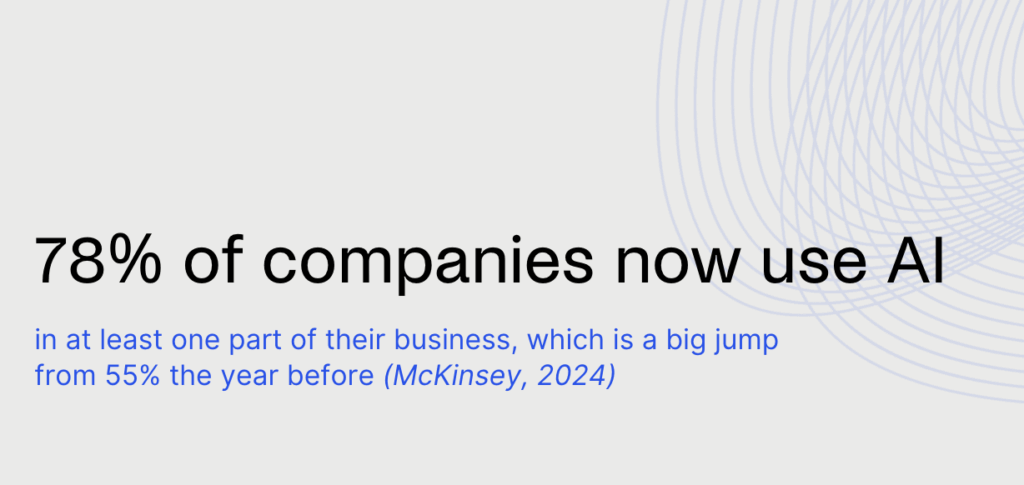
Larger companies (those making over $500 million a year) are leading the way. They’re twice as likely to:
- Have a clear plan for rolling out generative AI
- Use internal communication to build awareness and understanding
- Offer AI training based on specific roles
- Set up dedicated teams to drive AI adoption
Among all the tools available, ChatGPT is the most popular, with 65% of businesses saying they use it. Other tools like Microsoft Copilot are also gaining traction, helping employees write emails, summarize meetings, or sort through data and customer-facing analytics more easily.
Many companies are already seeing real benefits from using AI. Some business units are saving time and money, and starting to see better results. But the impact hasn’t reached every part of the organization yet. In fact, 80% of companies say generative AI hasn’t made a big difference across their whole business just yet.
That said, leaders are optimistic. 87% believe AI will boost revenue in the next three years, and many expect growth of over 5% once they scale it up properly.
Employees are leading the way
What’s interesting to see is that many workers aren’t waiting for their company to provide AI tools. In fact, 78% of AI users are bringing their own AI to work, especially in small and mid-sized companies. This trend, sometimes called “BYOAI” (Bring Your Own AI), shows that people are eager to use new tech to make their work easier, even without formal support from their employer.
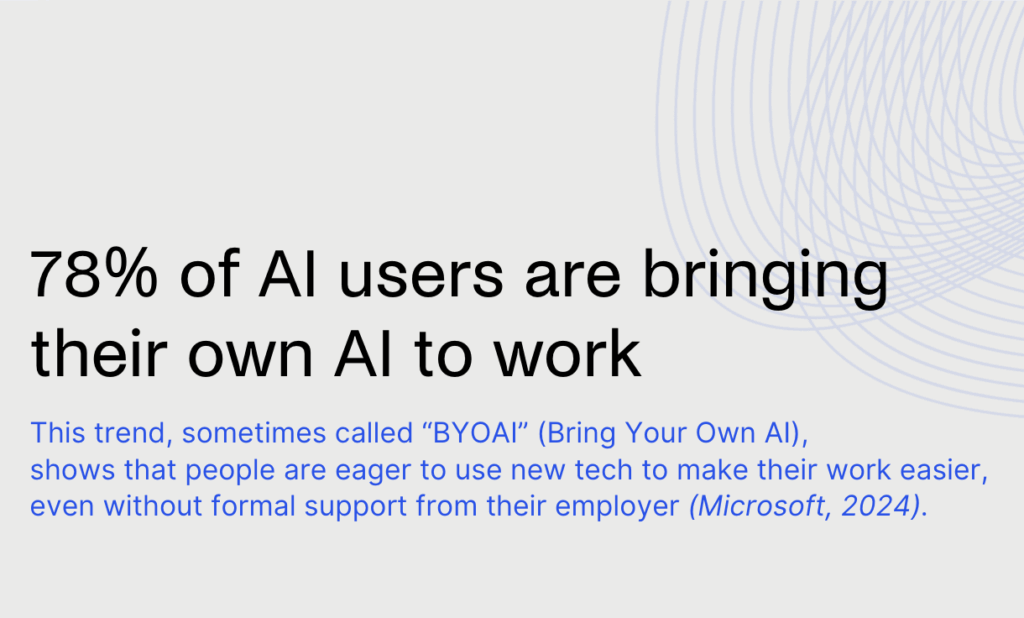
Automation is saving time on routine tasks
Beyond AI, automation tools are helping people spend less time on repetitive work like data entry, contact data enrichment, or sorting emails. Employees mostly use the time saved by automation to take on new tasks and spend more time on non-automated responsibilities. For example, an AI receptionist can handle call answering, scheduling, and lead intake, all for freeing up employees to focus on higher-value work.
That means more time for problem-solving, creativity, and collaboration. Especially since 72% of companies that use AI and automation frequently say their teams are highly productive. At the same time, larger companies are more likely to reduce staff where efficiency gains are highest…
AI skills are becoming essential
As AI becomes more common at work, knowing how to use it is turning into a must-have skill. In fact, 76% of professionals say they need AI skills to stay competitive in their careers. And it’s not just employees feeling the pressure — 71% of business leaders say they would rather hire someone with AI skills than someone who has more experience but no AI knowledge.
Because of this shift, companies are rethinking how they hire and train people. They’re now looking for new kinds of roles, like AI compliance or ethics specialists, and they’re also offering retraining so current employees can build the skills they need to keep up.
How does technology affect the workplace?
Technology is making a real difference in the workplace:
Technology can make work feel better
Technology isn’t just about speed and output. It can also improve how people feel about their jobs. According to recent data, 59% of employees who use AI say they’re more satisfied at work.
According to the 2024 Work Trend Index Annual Report from Microsoft and LinkedIn, people also say AI helps them save time (90%), focus on the important stuff (85%), and be more creative (84%). When tech makes work easier and more meaningful, job satisfaction tends to go up.
It changes how we communicate and collaborate
Modern tools have made it much easier to stay connected. Video meetings, messaging apps, and shared documents help teams work together across locations and time zones. AI assistants are even helping summarize meetings and sort through emails.
But when the tools don’t work well together or aren’t designed for remote or hybrid work, they slow people down. Almost half of employees (49%) say the tools they use don’t work properly in both the office and at home. That makes everyday tasks feel harder than they should.
Job change, not job loss (yet?)
Despite all the buzz about AI replacing jobs, most companies don’t expect big layoffs anytime soon. 38% say their workforce size will likely stay the same over the next three years.
Some roles, like customer service or supply chain, might get a bit smaller as AI takes over repetitive tasks. But other areas, especially IT and product development, could actually grow as companies need more people to build, manage, and improve AI tools.
For now, the time saved with AI is mostly being used to take on new tasks, not to cut jobs. So it’s more about shifting roles than losing them altogether.
But technology can cause stress if not managed properly
Not all tech makes work easier. In fact, 68% of workers say they feel overwhelmed by the pace and volume of work. Switching between too many apps or systems can create stress, not save time. And when people don’t get proper training, or the tools they use are outdated, it adds frustration.
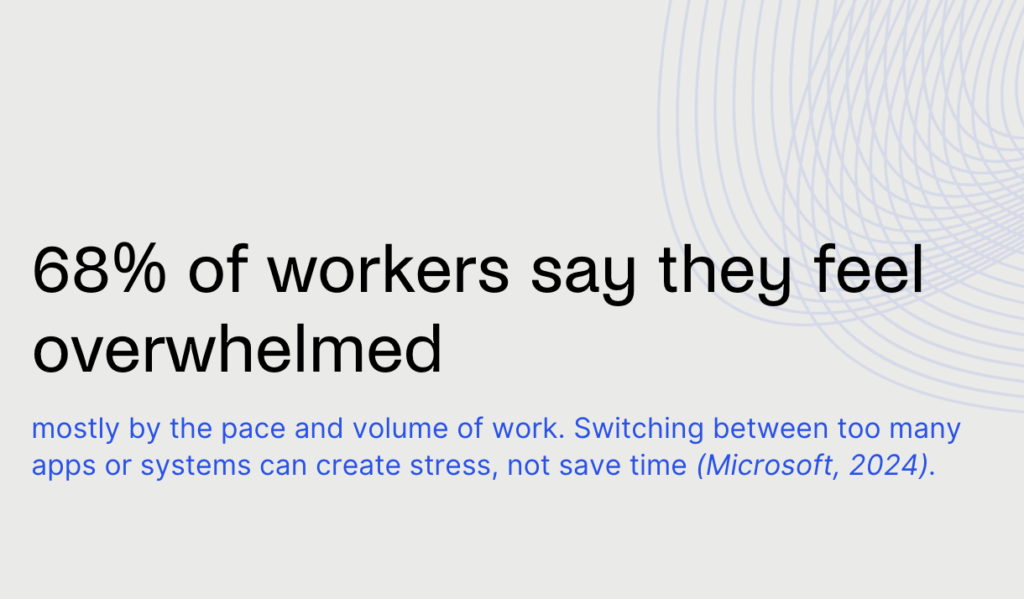
It also brings new risks
As more work moves online and AI becomes part of everyday tasks, staying safe is more important than ever. More companies are starting to manage AI-related risks carefully — things like inaccurate AI results, data privacy issues, and protecting intellectual property. But there’s still a lot of room to improve. For example, only 27% of companies say they fully review all AI-generated content before using it.
Evolving work models and expectations
Work today looks a lot different than it did just a few years ago. With hybrid setups, remote teams, and fast-changing technology, staying connected is one of the most important parts of any job, and technology plays a big role in making that happen.
Everyone agrees that collaboration tools matter
Most people now see good tech as a must-have for teamwork, especially in a hybrid workplace. In a 2025 Cisco report, 90% of employees and 93% of employers said that strong collaboration tools are essential for successful hybrid work. These tools include things like video conferencing platforms, shared project boards, messaging apps, and smart meeting room booking systems like Archie.
But not every company is keeping up
Even though companies know how important these tools are, many are still falling behind. Only 32% of companies are investing in top-quality collaboration tech. That means a lot of teams are still working with outdated tools.
It’s not just about money, it’s about the experience for employees. Nearly half of employees (49%) say the tools they use don’t work well both at home and in the office. This can make meetings frustrating, slow down communication, and create confusion about who’s doing what.
AI adoption is growing, but most companies are still learning
Many businesses are starting to use AI, but most are still in the early stages. According to McKinsey, 92% of companies plan to increase their AI investment in the next three years. However, only 1% of leaders say their organization is truly advanced when it comes to using AI. This shows that AI is not yet fully built into the way most companies work.
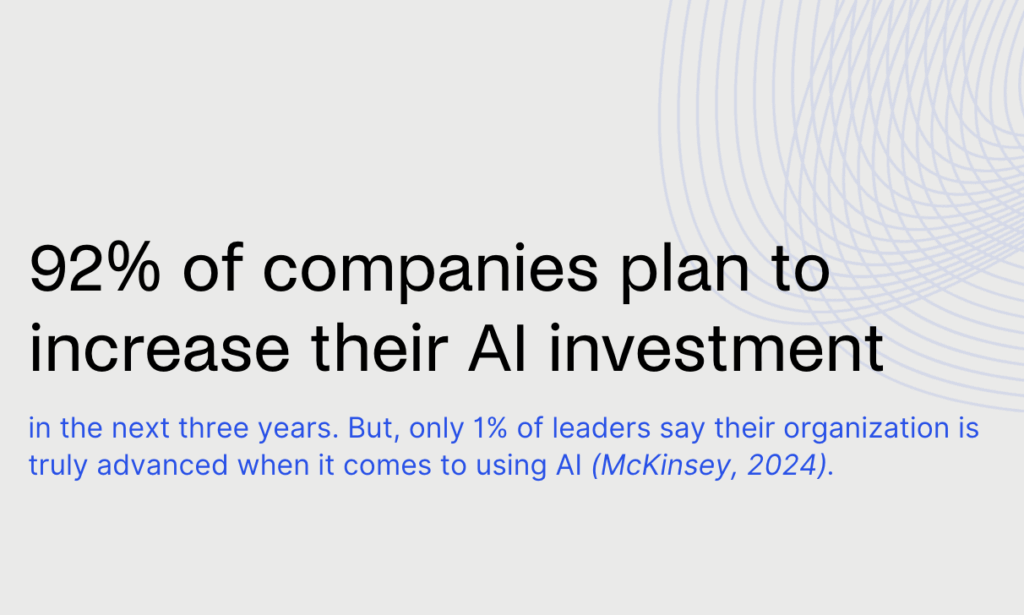
Even fewer companies are measuring how well their AI tools perform. Less than one in five track specific performance indicators, even though doing so helps improve results.
Employees are ahead of their leaders
One interesting finding is that many employees are already using AI more than their managers think. In fact, workers are three times more likely than leaders realize to use AI for 30% or more of their work.
And this is picking up speed. Nearly half of employees (47%) believe that AI will take over about a third of their tasks in the next year. Even so, many workers feel they aren’t getting enough training, support, or the right tools to use AI effectively.
Younger managers, especially those aged 35 to 44, tend to be the most confident and experienced with AI tools.
Trust is high, but action is needed
Most employees (71%) trust their company to use AI safely. But to keep moving forward, companies need to overcome some common challenges. These include unclear strategies, leadership teams that aren’t on the same page, gaps in planning, and concerns about how AI makes decisions.
These problems aren’t just technical. They’re business-related and require a thoughtful approach, clear communication, and a focus on helping people succeed with new tools.
A summary of the most recent technology in the workplace statistics
💻 Technology use and productivity
- 56% of businesses said they were seeing high productivity in 2024 thanks to tools like collaboration platforms and AI-powered software.
- 72% of companies that use AI and automation frequently say their teams are highly productive.
🤖 AI adoption and tools
- 75% of knowledge workers worldwide said they were already using generative AI at work.
- 78% of companies now use AI in at least one business function (up from 55% a year earlier).
- 71% of companies say they use generative AI, especially in IT, marketing, sales, and service operations.
- 65% of businesses say they’ve adopted ChatGPT as a workplace tool.
- 78% of AI users are bringing their own AI tools to work (BYOAI), especially in small and mid-sized companies.
- 47% of employees believe AI will take over a third of their workload within the next year.
🧠 AI skills and hiring
- 76% of professionals say they need AI skills to stay competitive in their careers.
- 71% of business leaders say they would rather hire someone with AI skills than someone with more experience but no AI knowledge.
- Companies are now hiring for roles like AI compliance and ethics specialists and retraining existing employees.
- 38% of companies expect no change in workforce size over the next 3 years due to AI.
- Roles in IT and product development are expected to grow, while some customer service and supply chain jobs may shrink.
😊 Job satisfaction and wellbeing
- 59% of employees who use AI say they’re more satisfied at work.
- AI helps employees:
- Save time – 90%
- Focus on the important stuff – 85%
- Be more creative – 84%
👩💻 Tech challenges and stress
- 49% of employees say the tools they use don’t work well both at home and in the office.
- 68% of workers say they feel overwhelmed by the pace and volume of work.
- Only 27% of companies fully review AI-generated content before using it.
- More organizations are managing AI risks, such as inaccuracy, cybersecurity, and intellectual property issues.
🧑🏫 Training and support
- Nearly 50% of employees said their company provided training on how to run better hybrid meetings.
- 90% of employees and 93% of employers say strong collaboration tools are essential for successful hybrid work.
- Only 32% of companies are investing in top-quality collaboration tech.
- 49% of employees say their tools don’t work well across home and office.
🏢 Evolving work models
- 92% of companies plan to increase their AI investment over the next three years.
- Only 1% of C-suite leaders say their companies are mature in AI use.
- Fewer than 1 in 5 companies track performance metrics (KPIs) for their AI tools.
- Employees are 3x more likely than leaders think to use AI for 30% or more of their tasks.
- Millennial managers (age 35–44) are the most confident and experienced group using AI.
- 71% of employees trust their company to use AI safely.
Sources
- Cisco, Global Hybrid Work Study 2025: Navigating Hybrid Work Strategies in the Evolving Workplaces
- Tech.co, The Impact of Technology in the Workplace Report
- McKinsey & Company, The State of AI
- McKinsey & Company, Superagency in the Workplace: Empowering People to Unlock AI’s Full Potential
- Microsoft and LinkedIn, 2024 Work Trend Index Annual Report

Berenika Teter
Archie's Content Manager, fueled by filter coffee and a love for remote work. When she’s not writing about coworking spaces and hybrid workplaces, you can probably find her exploring one.
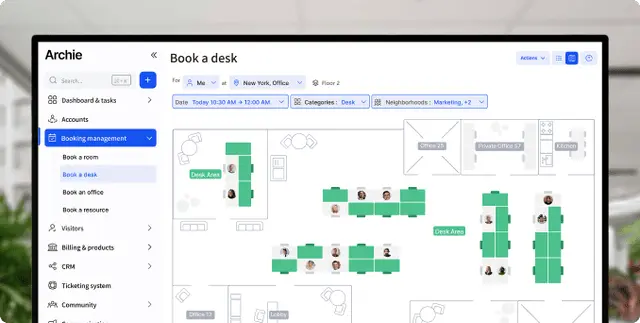
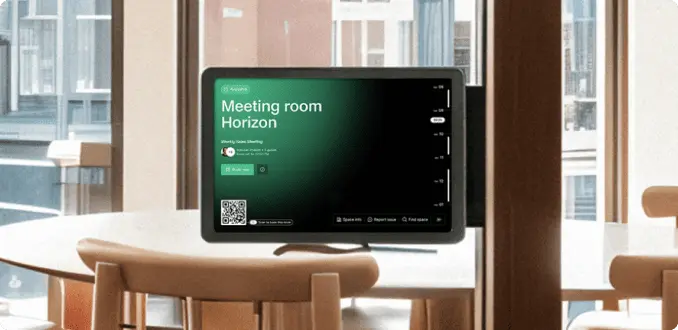
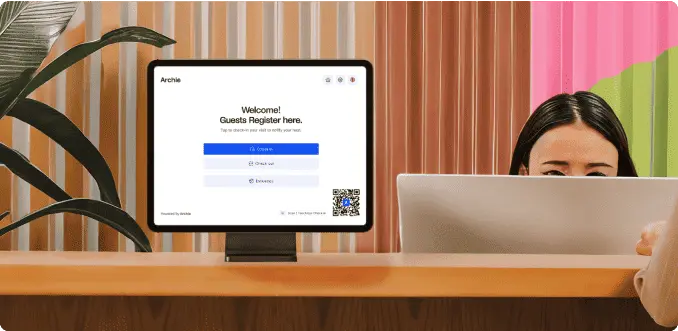
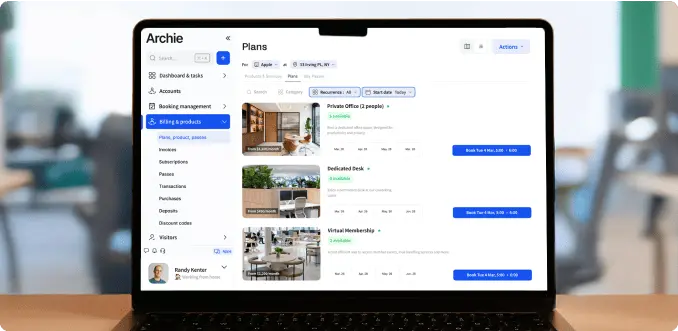
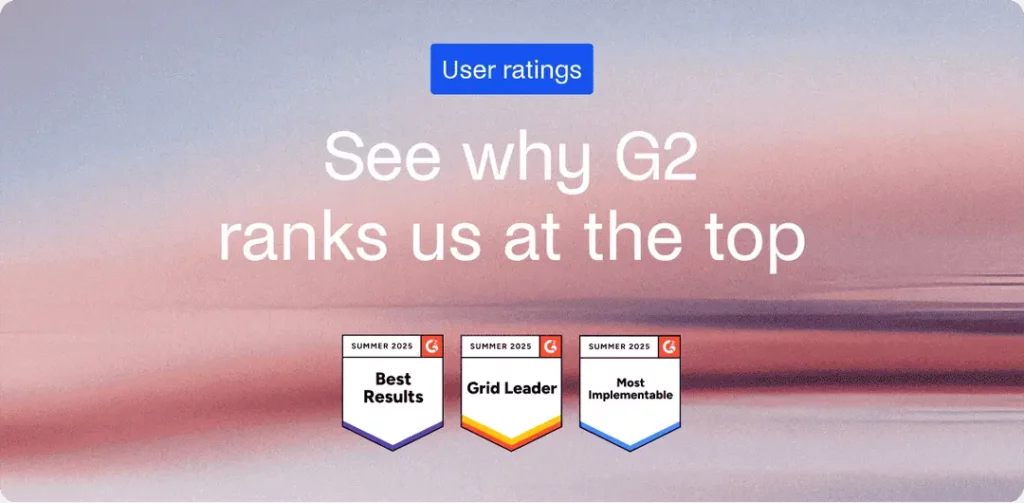
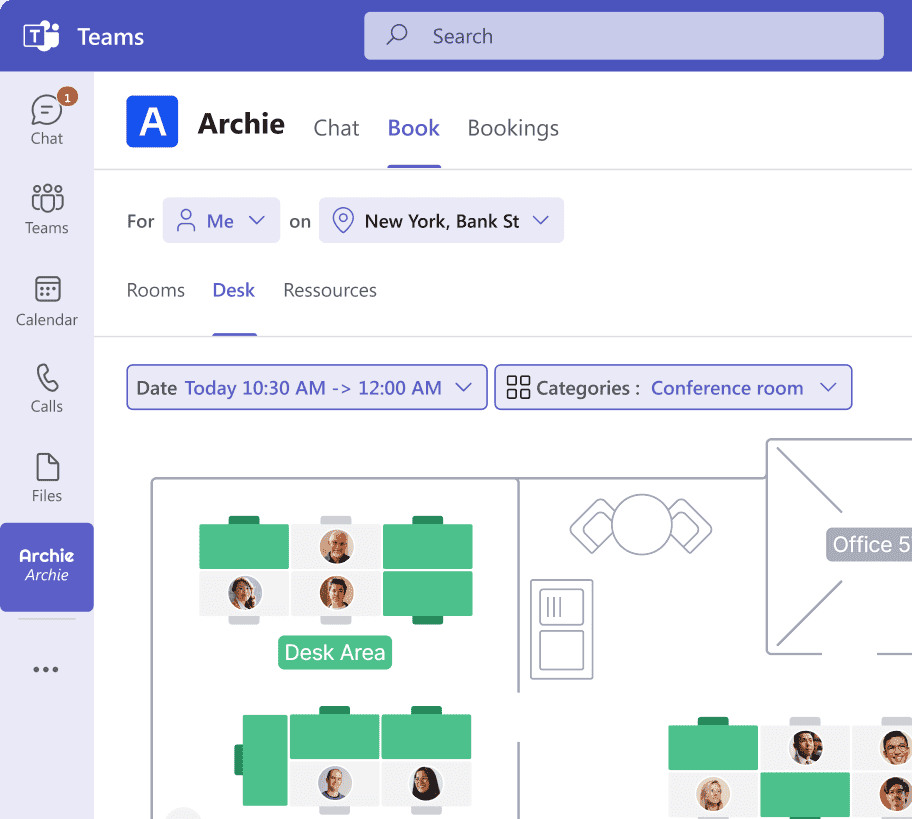
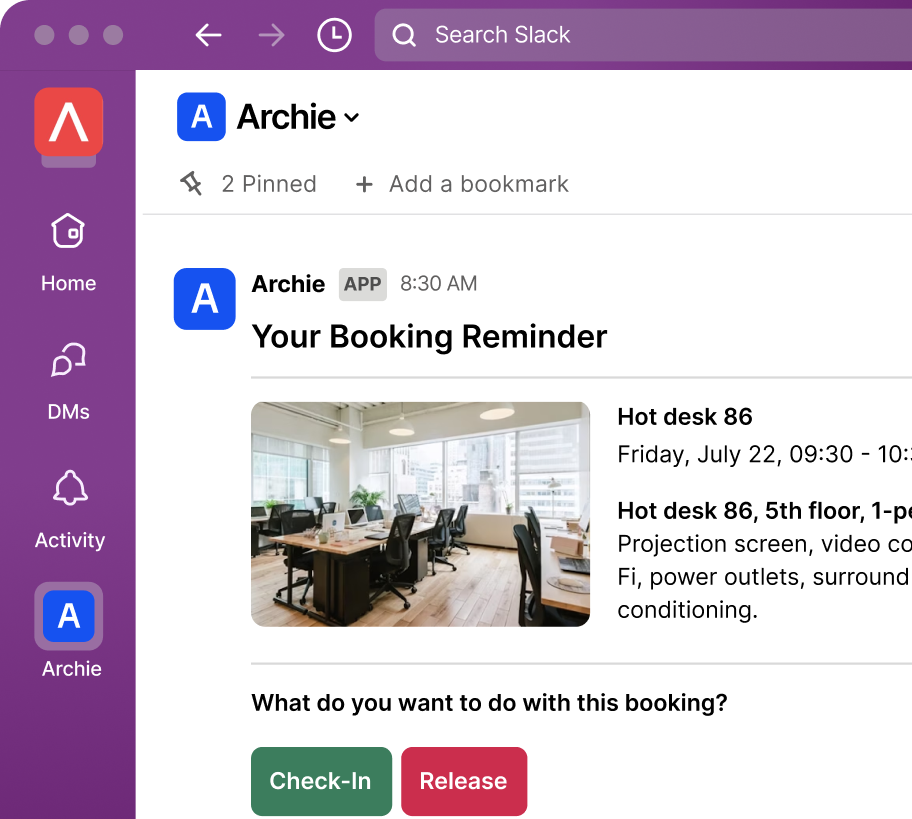
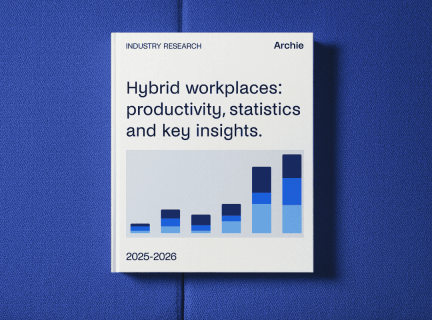
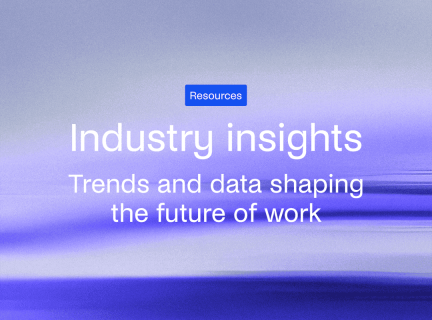
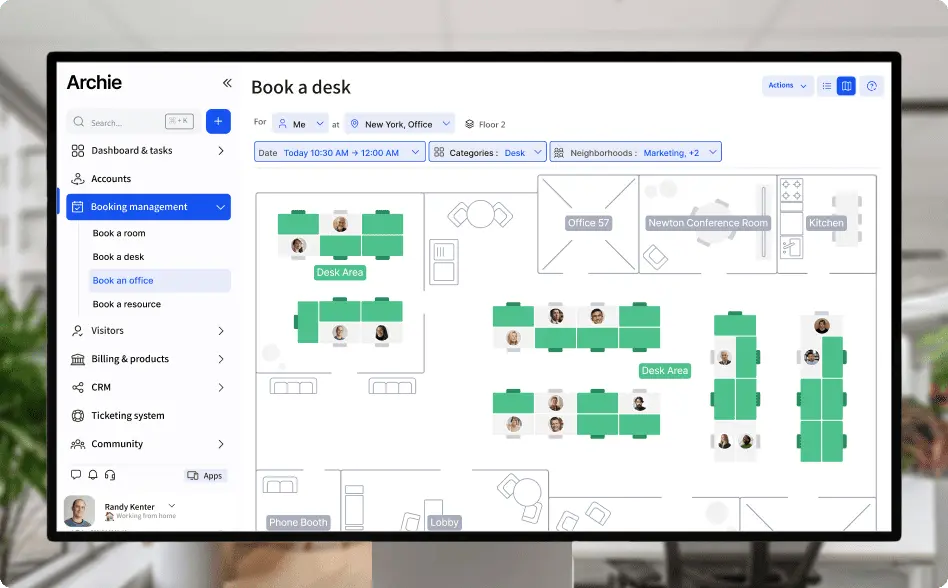
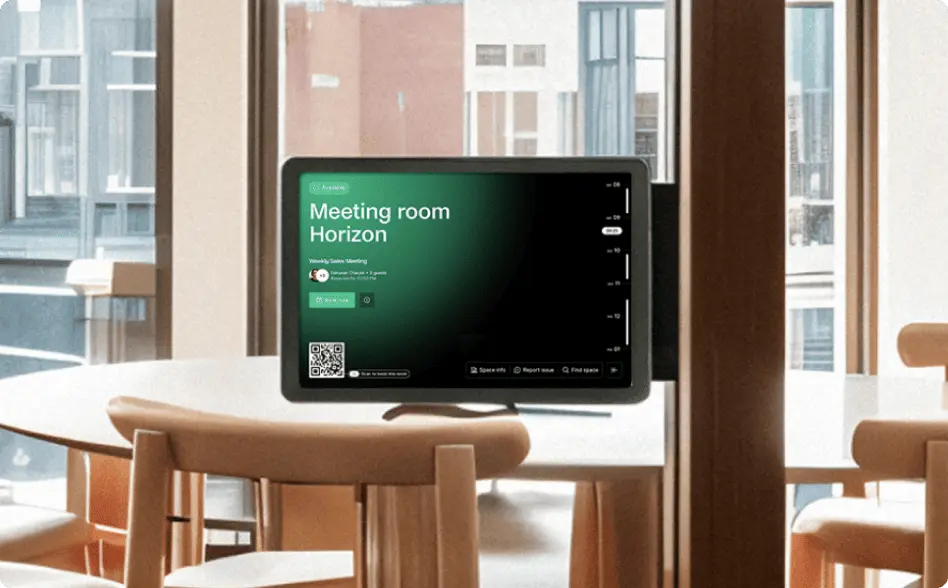
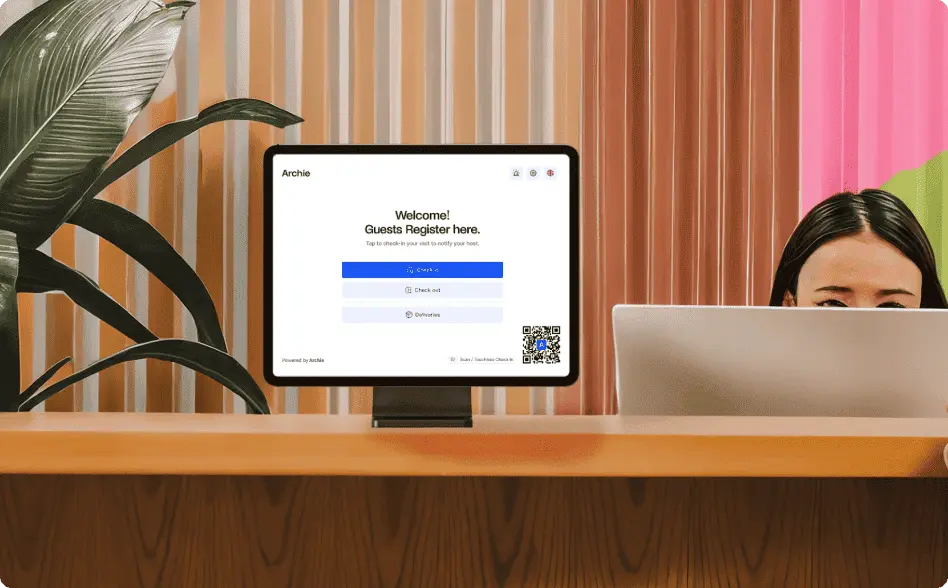
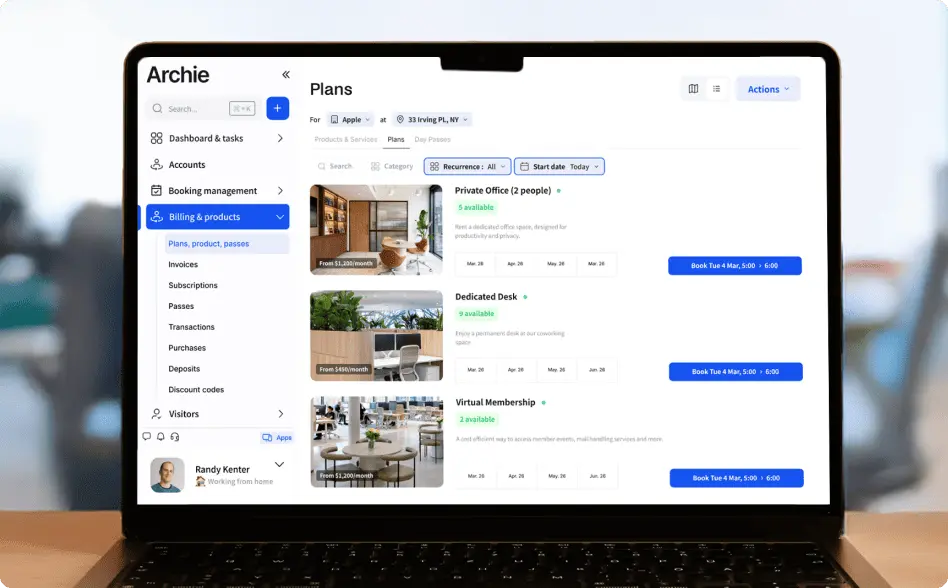


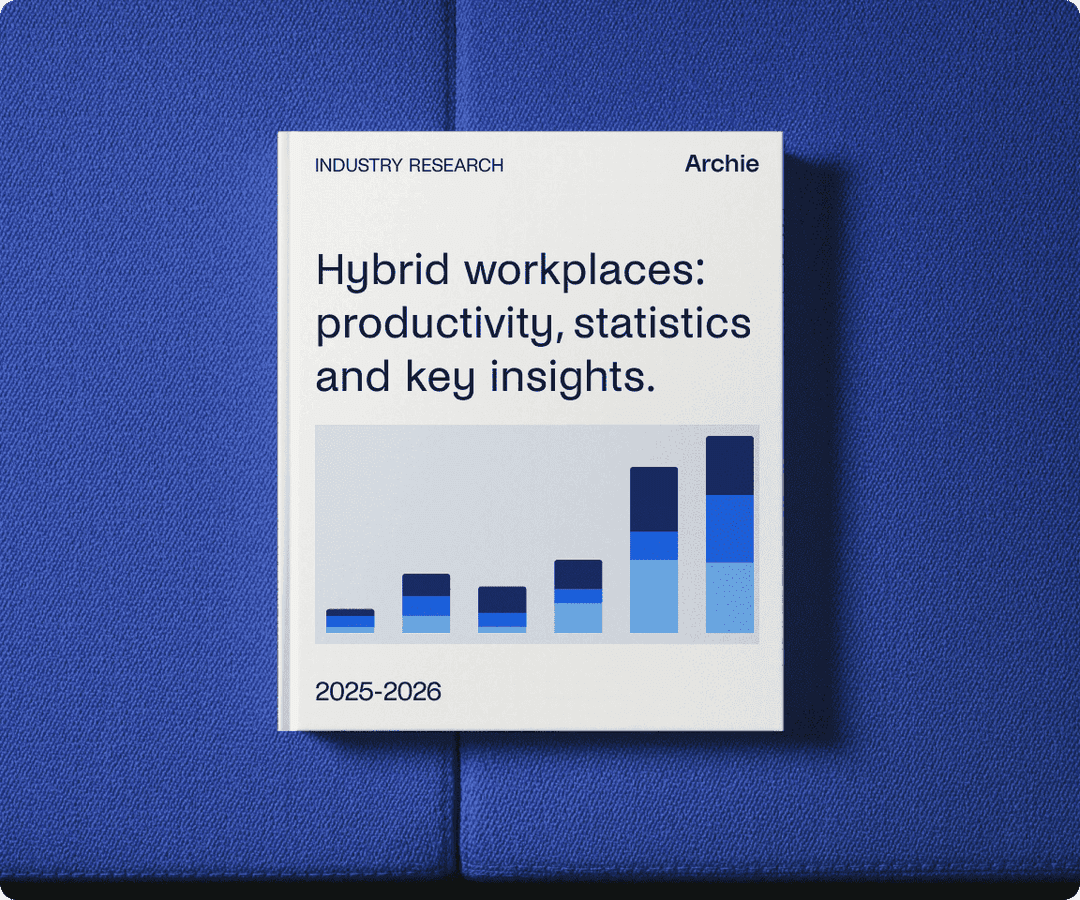
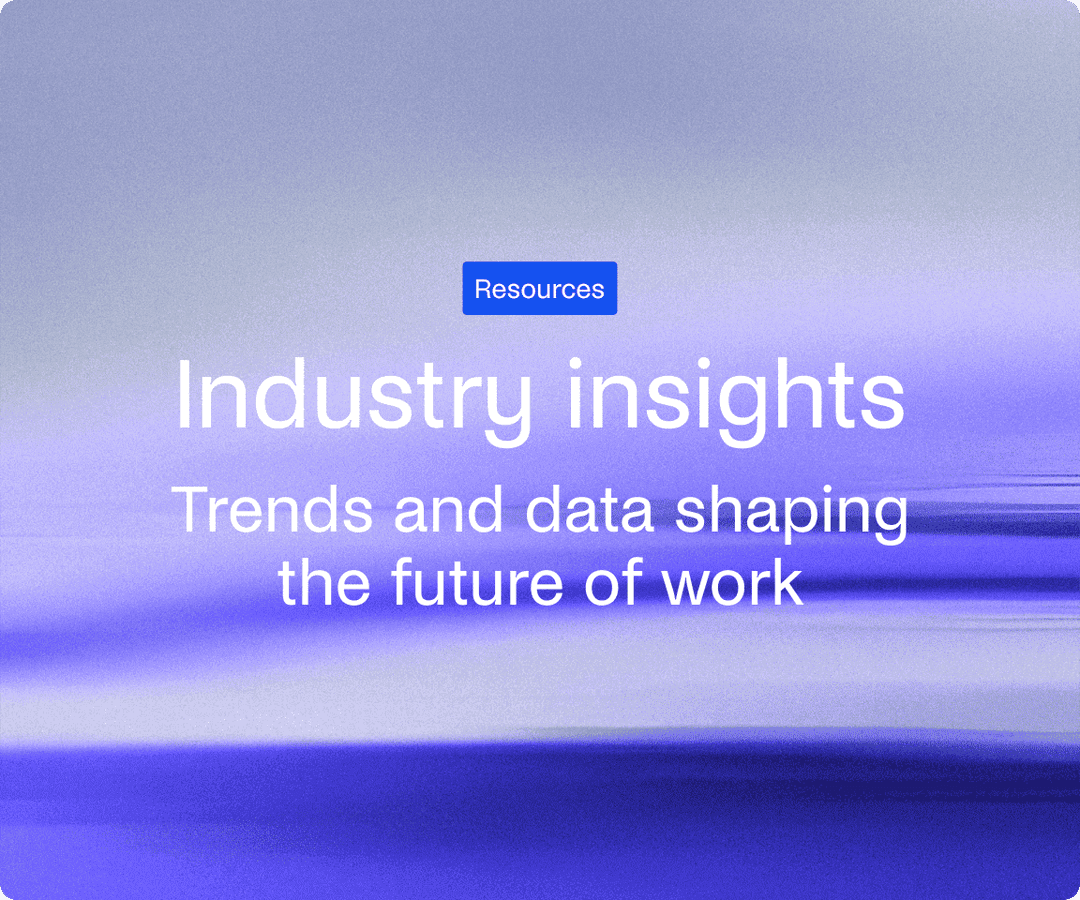
![The State of Technology in the Workplace: Statistics [2026] Close-up of a woman focused on her computer screen in an office setting.](https://archieapp.co/blog/wp-content/uploads/2025/07/Latest-technology-in-the-workplace-stats-cover-image.jpg)
![The Latest Coworking Statistics & Industry Trends [2026] A cozy coworking space with wooden walls, warm lighting, and a large map of South America.](https://archieapp.co/blog/wp-content/uploads/2025/08/Latest-coworking-statistics-cover-image-400x400.jpg)
![RTO: Return-To-Office Statistics, Research & Trends [2026] Modern meeting room with large windows, a wooden conference table, pink chairs, and industrial-style ceiling lighting.](https://archieapp.co/blog/wp-content/uploads/2025/04/RTO-statistics-cover-image-400x400.png)

